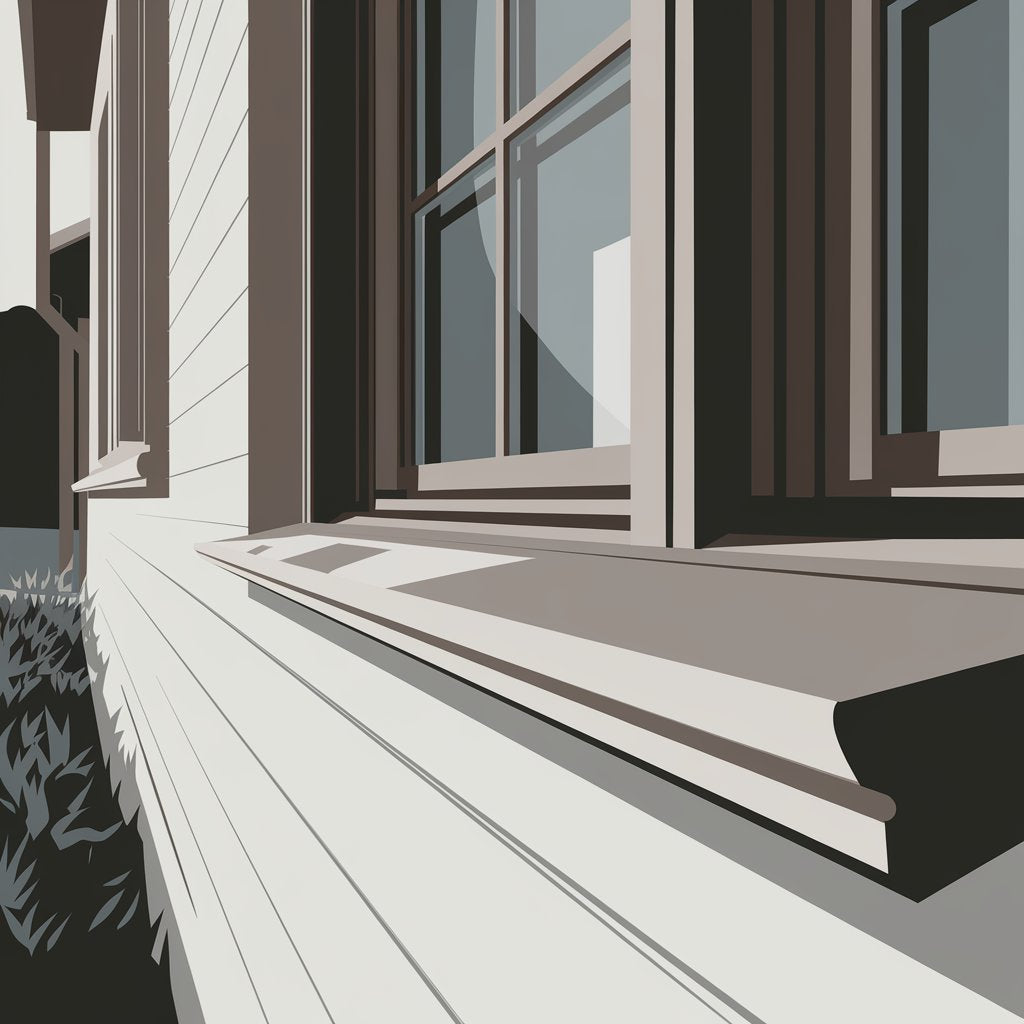MISHub QI
Window Sills and Sills: Functions, Advantages and Good Installation Practices
Window Sills and Sills: Functions, Advantages and Good Installation Practices
Window sills or thresholds are important construction elements, usually made of resistant materials such as marble, granite, ceramic or precast concrete. This study addresses the circumstances in which they are used, their advantages, disadvantages and considerations for their application.
Circumstances of Use
Window sills or thresholds are placed in several specific situations:
- External windows : To protect against rainwater infiltration.
- Areas subject to humidity : In kitchens, bathrooms or service areas, where there is greater exposure to splashes or accumulated water.
- Environments with direct exposure to the weather : Such as balconies, facades or buildings with large openings.
- Decorative facades : Where aesthetic finishing is a priority.
Advantages of Using Window Sills
- Infiltration protection :
- Prevents rainwater from penetrating walls and causing structural or aesthetic damage, such as damp stains.
- Its slope allows water to drain away efficiently.
- Durability :
- Materials such as granite and marble are resistant to wear, humidity and climate variations, ensuring a long service life.
- Aesthetics :
- Improves the appearance of the building, especially on modern or classic facades, with a variety of color and finish options.
- Ease of maintenance :
- Protects the base of the window from dirt, making cleaning easier and faster.
- Versatility of materials :
- Available in different types (granite, marble, ceramic, concrete), catering to different budgets and architectural styles.
Disadvantages of Using Window Sills
- Additional cost :
- Materials such as marble and granite can be expensive, increasing overall construction costs.
- Specific maintenance :
- Marble or granite surfaces may require extra care to avoid staining or damage from chemicals.
- Improper installation problems :
- If they are not installed at the correct angle or well sealed, they can cause leaks, compromising their functionality.
- Risks in extreme climates :
- In areas with frequent freeze-thaw cycles, materials like granite can expand and crack if they are not suitable for the climate.
Good Installation Practices
- Slope :
- The window sill must be installed with a minimum slope of 5° towards the outside to ensure water drainage.
- Sealing :
- Use silicone-based sealants to prevent leaks at the joint with the wall or window.
- Size :
- It must have an edge that extends beyond the wall by at least 2 cm to prevent water from running directly onto the facade.
- Finishing :
- Well-polished edges and rounded finish prevent scratches and accumulate less dirt.
Function of the Lower Cut
Window sills or thresholds often have a drip edge (also known as a drip edge ). This drip edge plays an essential role in the functionality of the sill, protecting the building from water damage.
- Avoid direct runoff onto the facade :
- The cut creates a break in the flow of rainwater, forcing it to drip directly onto the ground instead of running down the exterior wall. This reduces the risk of stains, leaks and wear to the coatings.
- Infiltration prevention :
- Without the cut, water can be driven back by gravity to the base of the sill and penetrate the structure, causing leaks and damp on the internal walls.
- Construction durability :
- Minimizes water damage over time, protecting plaster, paint and other exterior finishes.
- Protection against mold and efflorescence :
- By preventing moisture from reaching the masonry, it reduces the formation of mold and the occurrence of efflorescence (white stains caused by mineral salts).
Bibliographic References
VIEIRA, JF; CARVALHO, MR Construction and Finishing Technology . Porto Alegre: Editora Construção, 2012.
RICHARDSON, WL Principles of Residential Construction . New York: McGraw-Hill, 1981.
Author: Eng. Francisco Quisele Jr.
Date of publication : 11/21/24
Share


